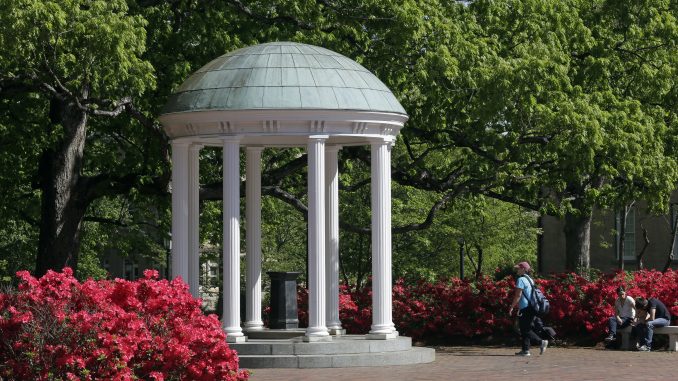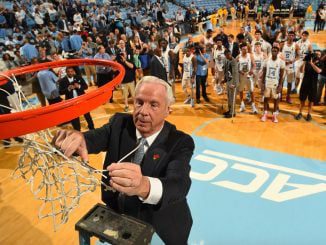
 Last month, the UNC Board of Governors directed all UNC System institutions to make contingency plans for budget cuts between 25 and 50%. It’s smart to plan ahead, though budget cuts will likely be smaller than these “worst-case” scenarios.
Last month, the UNC Board of Governors directed all UNC System institutions to make contingency plans for budget cuts between 25 and 50%. It’s smart to plan ahead, though budget cuts will likely be smaller than these “worst-case” scenarios.
Fall university revenues are likely to be far lower than in past years. North Carolina’s tax revenues are projected to be down by 7% due to the economic repercussions of the coronavirus pandemic. The Board already decreased its budget request by $185 million to comply with guidance from the State Budget Director’s office that limits requests to “must-do” items.
Tuition and fee revenues will also be lower than usual. North Carolina applications for federal student aid are down almost 4% this year, indicating that fewer students will be on campus this fall. Some first-year students may decide to take a gap year instead of going straight into universities. The UNC Board of Governors has also asked chancellors to report on the financial impacts of potential fall campus closings and subsequent reductions in room and board.
It’s likely that private giving to universities will also be affected by the pandemic. In a nationwide survey, 20% of donors said they will reduce their giving this year because of concerns about the economy. Other donors are shifting their money to health- and human services-related charities.
Although $174 million of federal funding was allocated to UNC System institutions through the CARES Act, at least $87 million will go directly to students in emergency financial aid grants. The remainder will be used to partially offset costs associated with the pandemic.
The bottom line? Significantly less money will be flowing into university coffers this fall. Despite these grim projections, the UNC System can make smart cuts that eliminate waste and excess while preserving the academic core.
I recently wrote about this topic, with my co-author Sumantra Maitra, in a short report for the Martin Center, titled, “Higher education after COVID-19: How universities can preserve core academic functions and reduce spending.” We recommended, “urgent short-term reforms, as well as long-term restructuring, [to help] universities survive the revenue shortfalls created by COVID-19 and state economic shutdowns.”
Sports should come first. Most UNC schools heavily subsidize their athletics departments using general funds and student fees. Only N.C. State and UNC-Chapel Hill generate a significant portion of their athletics budgets through donations, ticket sales and conferences. Even at ECU, 45% of the athletics budget is subsidized. If COVID-19 prevents in-person attendance at fall games, even N.C. State and UNC will be in the red. Universities should consider eliminating some sports personnel or programs, dropping to a lower division, and/or reducing athletics scholarships. Many universities across the country have already started this process. Head coaches should take the lead and accept a temporary pay cut of at least 10% to serve as an example to others.
Universities should also immediately end new capital spending. Classroom and laboratory space are available in abundance at almost every school in the UNC System. The average classroom was used just 28.2 hours per week in 2017. Keeping some courses online this year — which is happening already due to COVID — will alleviate the few true facilities crunches that exist. To its credit, the Board began rethinking UNC’s capital expenditures after universities sent students home in March.
Universities should also cut professional staff — who outnumber faculty by more than 2-to-1 across the UNC System — significantly. Some staffing cuts can be realized by centralizing services such as human resources and legal services. Other professional employees don’t directly contribute to the university’s academic mission or student success and should also be considered for elimination. At the same time, pay for top administrators should be cut by 10%.
Lastly, the UNC system should eliminate low-productivity academic programs. Any programs that don’t produce at least 10 majors each year should be ended. And other small programs that are duplicated across the system should be limited to just a few campuses. There is no need for every school to offer every major.
These strategic cuts will help the UNC System weather the current crisis and thrive in the future.




